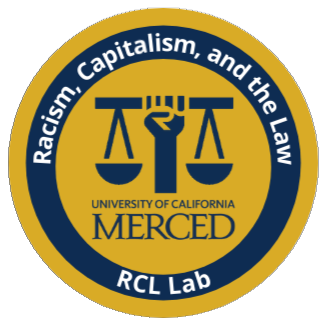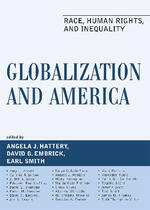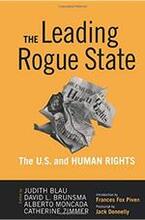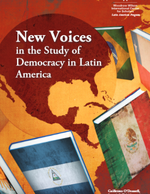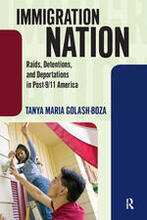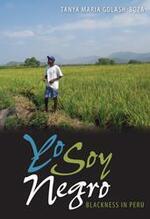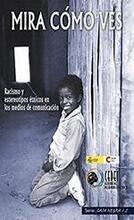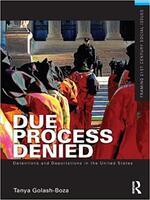Draws a direct line between redlining, incarceration, and gentrification in an American city.
This book shows how a century of redlining, disinvestment, and the War on Drugs wreaked devastation on Black people and paved the way for gentrification in Washington, DC. In Before Gentrification, Tanya Maria Golash-Boza tracks the cycles of state abandonment and punishment that have shaped the city, revealing how policies and policing work to displace and decimate the Black middle class.
Through the stories of those who have lost their homes and livelihoods, Golash-Boza explores how DC came to be the nation's "murder capital" and incarceration capital, and why it is now a haven for wealthy White people. This troubling history makes clear that the choice to use prisons and policing to solve problems faced by Black communities in the twentieth century—instead of investing in schools, community centers, social services, health care, and violence prevention—is what made gentrification possible in the twenty-first. Before Gentrification unveils a pattern of anti-Blackness and racial capitalism in DC that has implications for all US cities.
- Home
- All
All
When middle-class and White residents move into working-class and poor Black neighborhoods, are there increases in the frequency of arrests of Black people? There are a handful of published articles that examine quantitatively the relationship between gentrification and policing. These studies focus almost exclusively on Los Angeles and New York City and the focus on racialized policing is limited. The present study considers racialized policing in a city that was, until very recently, majority Black and explores the extent to which gentrification and racial change in Washington, DC are associated with enhanced policing of Black residents. A spatial regression analysis which models the association between gentrification, White encroachment, and the policing of Black residents using arrest data from the D.C. Metropolitan Police Department and a gentrification score based on American Community Survey data reveals clear racialized and spatial disparities in arrest rates in Washington, DC. We hypothesized that census tracts experiencing gentrification and White encroachment would have higher drug arrest rates of Black residents. We found support for our White encroachment hypothesis but not for our gentrification hypothesis.
This article responds to the current academic debate on the advantages of bilingualism to the children of immigrants in the United States. The author utilizes data from the 1992–1993 and 1995–1996 Children of Immi rants Longitudinal Study to estimate the effects of bilingualism on efucational outcomes. In contrast to a recent study, the author rovides conclusive evidence that there are advantages to bilingualism beyond the functional ability to communicate with one’s parents. The author also provides evidence that demonstrates that bilingualism is only advantageous in those communities with low levels of English proficiency and high levels of resources and networks.
Are predictions that Hispanics will make up 25 per cent of the US population in 2050 reliable? The authors of this paper argue that these and other predictions are problematic insofar as they do not account for the volatile nature of Latino racial and ethnic identifications. In this light, the authors propose a theoretical framework that can be used to predict Latinos’ and Latinas’ racial choices. This framework is tested using two distinct datasets – the 1989 Latino National Political Survey and the 2002 National Survey of Latinos. The results from the analyses of both of these surveys lend credence to the authors’ claims that Latinas’ and Latinos’ skin colour and experiences of discrimination affect whether people from Latin America and their descendants who live in the US will choose to identify racially as black, white or Latina/o.
This paper examines the relationship between globalization and immigration, and makes the case that current foreign policies and immigration regulations in the United States and France result in the violation of the human rights of migrants. In the United States, the House and Senate proposals presented in 2005 and 2006 to stem the tide of immigrants and thereby fix the immigration "problem" either criminalize undocumented workers or transform them into temporary workers. In France, the "selected immigration" bill introduced by Interior Minister Nicolas Sarkozy, and passed in 2006, makes it easier for skilled workers to enter and remain in France and harder for less skilled workers to do so. These proposals and bills fail to see immigrants as human beings with dignity and fundamental rights to a livelihood, a family, and a community, and fail to take into account the receiving countries" complicity in producing emigration. Designed to maximize profits for corporations, and minimize the prices of consumer goods for customers in the Global North, these policies and regulations have a high human cost. This paper explains how temporary worker programs are designed to extract labor from immigrants while preventing them from becoming full and equal members of the communities in which they work and live, and how the criminalization of undocumented immigrants transforms migrants into second-class citizens. From a human rights perspective, all human beings should have the right to food security, to decent health care, to safe working conditions, to an education, to a family, to their cultural identity, and to fight and organize for their rights. Temporary worker programs that permit workers to come to a country only to work for low wages and no benefits, and do not permit them to bring their families, to send their children to school, and to form communities are a violation of these workers" human rights.
As globalization expands, more than goods and information are traded between the countries of the world. Hattery, Embrick, and Smith present a collection of essays that explore the ways in which issues of human rights and social inequality are shared globally. The editors focus on the United States’ role in contributing to human rights violations both inside and outside its borders. Essays on contemporary issues such as immigration, colonialism, and reparations are used to illustrate how the U.S. and the rest of the world are inextricably linked in their relationships to human rights violations and social inequality. Contributors include Judith Blau, Eduardo Bonilla-Silva, and Joe R. Feagin.
This article provides a genealogy of the idea of an immigration industrial complex.The immigration industrial complex isthe confluence of public and privatesector interests in the criminalizationof undocumented migration, immigrationlaw enforcement, and the promotion of ‘anti-illegal’ rhetoric. This concept isbased on ideas developed with regardto the prison and military industrialcomplexes. These three complexes sharethree major features: (a) a rhetoric offear; (b) the convergence of powerful interests; and (c) a discourse of other-ization.This article explores why Congress has notpassed viable legislation to deal withundocumented migration, and instead has passed laws destined to fail, and hasappropriated billions of dollars to the Department of Homeland Security toimplement these laws. This has been exacerbated in the context of the War on Terror,now that national security has been conflated with immigration law enforcement.This is the first in a two-part serieson the immigration industrial complex.
In 2006, the Peruvian government passed a law that made racial discrimination a crime punishable by incarceration. This law, part of a multicultural reform in Peru, can be seen as an effective recognition of the reality of racism in Peruvian society. Such recognition, however, contrasts with official depictions of Peru as a country without racism, and of Peruvians as people who deny the existence of racism in their society. Based on semi-structured interviews conducted in Lima, this note explores everyday discourses on this issue. The findings show that Limeños recognize racism as a societal problem, but they adhere to a restrictive definition of racism and use rhetorical strategies that allow them to portray themselves as not racist. Their expressions of distaste for people of color demonstrate that racism persists in interpersonal discourses because of deeply embedded ideas about the inferiority of blacks and Indians.
This article explores how race and color labels are used to describe people in an Afro-Peruvian community. This article is based on analyses of 88 interviews and 18 months of fieldwork in an African-descended community in Peru. The analyses of these data reveal that, if we consider race and color to be conceptually distinct, there is no "mulatto escape hatch," no social or cultural whitening, and no continuum of racial categories in the black Peruvian community under study. This article considers the implications of drawing a conceptual distinction between race and color for research on racial classifications in Latin America.
Undocumented migrants are not criminals. Detention is not prison. Deportation is not punishment. These are truths in the legal system of the United States. However, undocumented migrants are treated like criminals; detainees feel as if they are in prison; and deportees experience their exclusion as punishment. This article examines the contradictions between legal arguments which indicate that immigration proceedings are not criminal proceedings and the experiences of deportees who often feel as if they were treated like criminals and that banishment from the country in which they have lived most of their lives is a cruel punishment.
The concept of an immigration industrial complex draws from previous work on the prison industrial complex and the military industrial complex. All three of these complexes point to the ways that the interests of government bureaucracies, corporate elites, and politicians shape laws and policies. This article explains how the undocumented status of migrants provides advantages to at least three groups: (a) media pundits who make their careers railing against ‘illegal aliens’; (b) politicians who use undocumented migrants as scapegoats; and (c) contractors who profit from massive immigration enforcement expenditures. The disenfranchised status of undocumented migrants enhances the ability of each of these groups to benefit from their presence. This confluence of interests explains why Congress has not enacted viable immigration policies that effectively deal with the ‘problem’ of illegal immigration. This is the second in a two-part series on the immigration industrial complex.
Immigration Nation provides a critical analysis of the impact that U.S. immigration policy has on human rights. In the wake of 9/11, the Department of Homeland Security was founded to protect America from the threat of terrorist attacks. However, along with dramatic increases in immigration law enforcement raids, detentions, and deportations have increased six-fold in the past decade American citizens, families, and communities have ultimately borne the cost. Although family reunification is officially a core component of U.S. immigration policy, these same policies often tear families apart. Pundits and politicians nearly always frame this debate in terms of security and economic needs, but here, Tanya Maria Golash-Boza addresses the debate with the human rights of migrants and their families at the center of her analyses.
Yo Soy Negro is the first book in English—in fact, the first book in any language in more than two decades—to address what it means to be black in Peru. Based on extensive ethnographic work in the country and informed by more than eighty interviews with Peruvians of African descent, this groundbreaking study explains how ideas of race, color, and mestizaje in Peru differ greatly from those held in other Latin American nations. The conclusion that Tanya Maria Golash-Boza draws from her rigorous inquiry is that Peruvians of African descent give meaning to blackness without always referencing Africa, slavery, or black cultural forms. This represents a significant counterpoint to diaspora scholarship that points to the importance of slavery in defining blackness in Latin America as well as studies that place cultural and class differences at the center of racial discourses in the region.
Human rights declarations provide the right for any person to leave their country, yet do not provide the right to enter another country, stopping halfway in asserting a right to mobility. In this article we provide evidence that 1) state policies and actions create migration flows; 2) migrants often travel to fulfil their human rights; and 3) current restrictions on immigration curtail migrants’ human rights. We argue, based on sociological evidence, that the right to mobility is a fundamental human right, and deserves a place in human rights doctrine.
In this essay, I consider what a sociology without borders would look like through an exploration of two questions: 1) How can sociology be mobilized to make the world a better place? and 2) What does a sociology of human rights look like? To answer these questions, I take the reader through a discussion of the history of Sociologists without Borders, the influence of Professor Judith Blau, and my own excursions into the sociology of human rights in the United States and abroad.
Due process protections are among the most important Constitutional protections in the United States, yet they do not apply to non-citizens facing detention and deportation. Due Process Denied describes the consequences of this lack of due process through the stories of deportees and detainees. People who have lived nearly all of their lives in the United States have been detained and deported for minor crimes, without regard for constitutional limits on disproportionate punishment. The court’s insistence that deportation is not punishment does not align with the experiences of deportees. For many, deportation is one of the worst imaginable punishments.
This article reviews how US deportations ballooned between 1997 and 2012, and underscores how these deportations disproportionately targeted Latino working class men. Building on Mae Ngai’s (2004) concept of racial removal, we describe this recent mass deportation as a gendered racial removal program. Drawing from secondary sources, surveys conducted in Mexico, the U.S. Department of Homeland Security published statistics, and interviews with deportees conducted by the first author in Guatemala, the Dominican Republic, Brazil and Jamaica, we argue that: (1) deportations have taken on a new course in the aftermath of 9/11 and in the wake of the global economic crisis – involving a shift towards interior enforcement; (2) deportation has become a gendered and racial removal project of the state; and (3) deportations will have lasting consequences with gendered and raced effects here in the United States. We begin by examining the mechanisms of the new deportation regime, showing how it functions, and then examine the legislation and administrative decisions that make it possible. Next, we show the concentration of deportations by nation and gender. Finally, we discuss the causes of this gendered racial removal program, which include the male joblessness crisis since the Great Recession, the War on Terror, and the continued criminalization of Black and Latino men by police authorities.
In the wake of September 11, 2001, the Department of Homeland Security (DHS) was created to prevent terrorist attacks in the US.This led to dramatic increases in immigration law enforcement - raids, detentions and deportations have increased six-fold. Immigration Nation critically analyses the human rights impact of this tightening of US immigration policy. Golash-Boza reveals that it has had consequences not just for immigrants, but for citizens, families and communities. She shows that even though family reunification is officially a core component of US immigration policy, it has often torn families apart. This is a critical and revealing look at the real life - frequently devastating - impact of immigration policy in a security conscious world.

